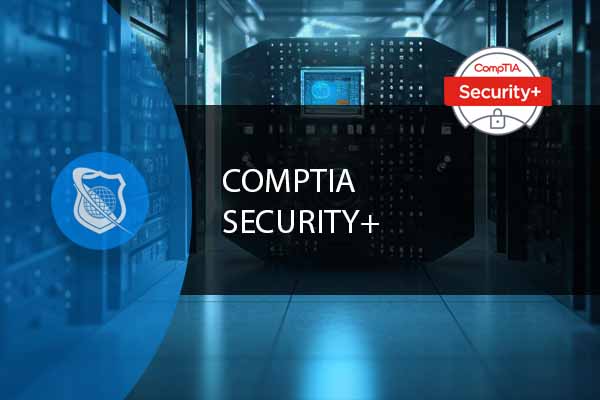In the realm of enterprise security, understanding and managing the attack surface is a critical aspect of protecting an organization’s assets and information. This guide delves into various strategies and technologies aimed at minimizing the attack surface, including firewalls, Intrusion Detection Systems (IDS) and Intrusion Prevention Systems (IPS), secure communications, secure access, port security, as well as Software-Defined Wide Area Networks (SD-WAN) and Secure Access Service Edge (SASE, or “Sassy”).
Starting With Policy: The Foundation of Good Security
The first step in reducing the attack surface is the establishment of a consistent and comprehensive security policy. A well-defined policy serves as the foundation for all security measures, dictating the practices and protocols to be followed across different departments and levels within an organization. This ensures visibility and consistency in the security posture, allowing for easier updates and adjustments as needed, rather than relying on assumptions or guesswork.

Information Security Manager Career Path
Propel your career forward and be part of an essential member of any management team as an Information Security Manager. This advanced training series is designed specifically for those want to move up into a management position in the IT field.
Deploying Defense in Depth
A multi-layered approach, or defense in depth, is essential for robust security. This strategy involves implementing security measures at every level of the organization’s infrastructure—from the physical environment to the network, devices, operating systems, applications, and data. By layering defenses, organizations can protect against a wide range of threats, ensuring that even if one layer is compromised, others remain intact to thwart an attack.
Detailed Strategies for Minimizing the Attack Surface
Reducing the attack surface of an enterprise involves a combination of policies, strategies, and technologies designed to protect against external and internal threats. Here’s a deeper dive into the key components mentioned, including firewalls, Intrusion Detection Systems (IDS) and Intrusion Prevention Systems (IPS), secure communications, secure access, port security, as well as Software-Defined Wide Area Networks (SD-WAN) and Secure Access Service Edge (SASE).
Firewalls
Firewalls act as a barrier between your secure internal network and untrusted external networks such as the internet. A set of defined rules governs the traffic between these networks, allowing or blocking data packets based on security policies. Firewalls can be hardware-based, software-based, or a combination of both and are essential for preventing unauthorized access to network resources.
Intrusion Detection Systems (IDS) and Intrusion Prevention Systems (IPS)
IDS and IPS are critical components of network security, designed to detect and prevent security breaches. IDS monitors network and system activities for malicious activities or policy violations, logging information about such activities and notifying system administrators. IPS, on the other hand, not only detects but also prevents identified threats by blocking potentially malicious activity. While IDS operates in a passive mode, observing traffic without interfering, IPS takes an active role, analyzing and taking action on the traffic passing through it.
Secure Communications
Secure communications involve encrypting data in transit to ensure that sensitive information remains confidential and intact. Technologies such as SSL/TLS for web traffic, VPNs for secure remote access, and end-to-end encryption for messaging and email, are examples of tools that provide secure communication channels, preventing eavesdropping, interception, and tampering by unauthorized parties.
Secure Access
Secure access controls who or what can view or use resources in a computing environment. This involves authentication and authorization mechanisms such as multi-factor authentication (MFA), role-based access control (RBAC), and least privilege access policies. Ensuring that only authenticated and authorized users or systems can access sensitive information significantly reduces the risk of unauthorized access and data breaches.
Port Security
Port security refers to the defensive measures taken to protect the physical and logical ports of network devices from unauthorized access and misuse. This includes managing and securing both the physical ports on hardware devices and the network ports used for communication between devices. Techniques such as disabling unused ports, applying MAC address filtering, and using secure management protocols (like SSH instead of Telnet) help in minimizing the attack surface related to network ports.
Secure Your Networks and Prevent Password Breaches
Our robust CompTIA Sec+ course is the perfect resouce to ensure your company’s most valuable assets are safe. Up your security skills with this comprehensive course at an exceptional price.
Software-Defined Wide Area Networks (SD-WAN)
SD-WAN technology enables the creation of a managed and optimized WAN through software, offering enhanced agility, cost savings, and improved performance for cloud applications. By dynamically routing traffic across the most efficient paths and incorporating built-in security features, SD-WAN reduces the attack surface associated with traditional WAN connections and centralized internet access points.
Secure Access Service Edge (SASE)
SASE combines network security functions with WAN capabilities to support the dynamic, secure access needs of organizations’ mobile workforces and cloud applications. It integrates various security services like secure web gateways (SWG), cloud access security brokers (CASB), zero trust network access (ZTNA), and firewalls as a service (FWaaS) into a single, cloud-native service model. This convergence of networking and security provides comprehensive visibility and control, reducing the attack surface by ensuring secure access to resources, regardless of location.
By strategically implementing these technologies and approaches, organizations can effectively minimize their attack surface, enhancing their overall security posture and resilience against cyber threats.
Implementing Zero Trust
Zero Trust is a security model that operates on the principle of “never trust, always verify.” It is particularly well-suited for cloud infrastructure but can also be adapted for on-premises networks with the help of specialized vendors. Zero Trust architectures require continuous verification of all users and devices, regardless of their location relative to the network perimeter, effectively minimizing the attack surface by limiting access to resources to only those entities that are explicitly permitted.
Endpoint Protection: Beyond the Device
Endpoint protection focuses on securing the network from threats that may originate from mobile devices, laptops, and other endpoints. It involves deploying antivirus and anti-malware solutions, as well as mobile device management (MDM) systems. However, the goal of these measures is not solely to protect the devices themselves but to safeguard the broader network from potential threats introduced by these devices.
Understanding Failure Modes: Fail Closed vs. Fail Open
In the context of reducing the attack surface, it is important to consider how systems and devices respond to failures. The concept of “fail closed” refers to a system shutting down securely in the event of a failure, thereby preventing further operation or access. This is crucial for devices or systems where security is paramount. Conversely, “fail open” systems continue to allow operation or access when a failure occurs, prioritizing access over security. This is often used in physical security scenarios to ensure that individuals can exit an area in case of emergency, even if security systems fail.

Cybersecurity Ethical Hacker
To truly harness the full power of ethical hacking, explore ITU’s outstanding course.
Conclusion
Reducing the attack surface is a multifaceted challenge that requires a strategic approach to policy, a layered defense strategy, the implementation of Zero Trust principles, thoughtful endpoint protection, and a clear understanding of failure modes. By addressing these areas, organizations can significantly enhance their security posture, protecting their assets and information from potential threats. This guide has explored the key components and considerations in reducing the attack surface, providing a foundation for enterprises to develop and refine their security strategies.
Key Term Knowledge Base: Key Terms Related to Reducing the Attack Surface: A Guide to Enterprise Infrastructure Security
Understanding key terms related to reducing the attack surface and enhancing enterprise infrastructure security is vital for professionals aiming to protect organizational assets from cybersecurity threats. This knowledge base helps in identifying vulnerabilities, implementing effective security measures, and ensuring a robust defense against potential attacks. The terms outlined below encompass various aspects of cybersecurity, including threat identification, risk management, and security architecture, providing a comprehensive foundation for securing enterprise infrastructures.
| Term | Definition |
|---|---|
| Attack Surface | The total sum of points (digital and physical) where an unauthorized user can try to enter data to or extract data from an environment. |
| Vulnerability | A weakness in a system or its design that can be exploited by a threat actor, such as a hacker, to perform unauthorized actions within a computer system. |
| Threat Actor | An individual or group that can carry out a malicious act to damage or steal data or disrupt digital life in general. |
| Cybersecurity | The practice of protecting systems, networks, and programs from digital attacks aimed at accessing, changing, or destroying sensitive information, extorting money from users, or interrupting normal business processes. |
| Encryption | The process of converting information or data into a code, especially to prevent unauthorized access. |
| Firewall | A network security device that monitors and filters incoming and outgoing network traffic based on an organization’s previously established security policies. |
| Intrusion Detection System (IDS) | A device or software application that monitors a network or systems for malicious activity or policy violations. |
| Intrusion Prevention System (IPS) | An extension of IDS solutions that not only detects potentially malicious activity but also prevents such threats by blocking or stopping them before they can cause harm. |
| Patch Management | The process of managing a network of computers by regularly performing software patches to correct vulnerabilities and improve security. |
| Zero Trust Architecture | A security concept centered on the belief that organizations should not automatically trust anything inside or outside its perimeters and instead must verify anything and everything trying to connect to its systems before granting access. |
| Penetration Testing | A simulated cyber attack against your computer system to check for exploitable vulnerabilities. |
| Security Information and Event Management (SIEM) | A set of tools and services offering a holistic view of an organization’s information security, combining security information management (SIM) and security event management (SEM). |
| Phishing | The fraudulent attempt to obtain sensitive information or data, such as usernames, passwords, and credit card details, by disguising oneself as a trustworthy entity in an electronic communication. |
| Ransomware | A type of malicious software designed to block access to a computer system until a sum of money is paid. |
| Multi-Factor Authentication (MFA) | A security system that requires more than one method of authentication from independent categories of credentials to verify the user’s identity for a login or other transaction. |
| Public Key Infrastructure (PKI) | A set of roles, policies, hardware, software, and procedures needed to create, manage, distribute, use, store, and revoke digital certificates and manage public-key encryption. |
| Secure Sockets Layer (SSL)/Transport Layer Security (TLS) | Cryptographic protocols designed to provide communications security over a computer network. |
| Endpoint Security | The process of securing the various endpoints on a network, often defined as end-user devices such as mobile devices, laptops, and desktop PCs, from being exploited by malicious actors and campaigns. |
| Network Segmentation | The practice of splitting a computer network into subnetworks, each being a network segment. Advantages include reducing congestion and improving security. |
| Data Loss Prevention (DLP) | A strategy for making sure that end users do not send sensitive or critical information outside the corporate network. |
| Security Operations Center (SOC) | A centralized unit that deals with security issues on an organizational and technical level. |
| Advanced Persistent Threat (APT) | An attack campaign in which an unauthorized user gains access to a network and remains undetected for an extended period of time. |
| Identity and Access Management (IAM) | A framework of business processes, policies, and technologies that facilitates the management of electronic or digital identities. |
| Security Assessment | The process of identifying the current security posture of an information system or organization, which involves risk assessment, vulnerability scanning, and penetration testing. |
Frequently Asked Questions Related to Reducing an Attack Surface
What is an attack surface, and why is it important to minimize it?
The attack surface of an organization refers to the total sum of points (or “attack vectors”) where an unauthorized user (the “attacker”) can try to enter data to or extract data from an environment. Minimizing the attack surface reduces the number of potential vulnerabilities that an attacker could exploit, thereby enhancing the security of the enterprise’s systems and data.
How do firewalls contribute to reducing the attack surface?
Firewalls act as a barrier between secured internal networks and untrusted external networks, such as the internet. By defining and enforcing rules that allow or block traffic based on security policies, firewalls help to prevent unauthorized access to network resources, thereby significantly reducing the attack surface.
What is the difference between Intrusion Detection Systems (IDS) and Intrusion Prevention Systems (IPS)?
Both IDS and IPS are used to detect and respond to malicious activity within a network. The primary difference is that IDS is a monitoring system that alerts administrators to potential threats, whereas IPS actively prevents or blocks these threats from causing harm. IDS works in a passive manner, observing traffic without interference, while IPS takes an active role in analyzing and taking preventive action against traffic that it deems malicious.
Can you explain what Secure Access Service Edge (SASE) is and its role in minimizing the attack surface?
Secure Access Service Edge (SASE) is a cloud-native architectural model that combines network security functions with wide-area networking (WAN) capabilities to support dynamic secure access. SASE helps in minimizing the attack surface by providing comprehensive security and networking services (such as SWG, CASB, ZTNA, and FWaaS) from a unified, cloud-based platform. This ensures secure access to resources for the organization’s mobile workforce and cloud applications, regardless of their location.
Why is port security important, and how does it reduce the attack surface?
Port security is crucial because it helps protect both the physical and logical ports of network devices from unauthorized access and misuse. By managing and securing the ports through which devices connect to the network and communicate with each other, organizations can prevent attackers from exploiting these entry points. Techniques such as disabling unused ports, applying MAC address filtering, and using secure management protocols help in minimizing the attack surface related to network ports.

























